Tree Removal
Top 13 Tips for Effective Tree Pest Management


As an avid tree lover, I’ve witnessed the devastating effects of pest infestations firsthand. That’s why I’ve compiled the top 13 tips for effective tree pest management.
From identifying common pests to implementing organic control methods, these techniques will help you protect your beloved trees.
By encouraging natural predators and practicing proper sanitation, you’ll create a thriving ecosystem that keeps pests at bay.
Don’t let your trees suffer any longer. Take action and ensure their health and beauty for years to come.
Identify Common Tree Pests
To effectively manage tree pests, I rely on identifying common tree pests as a crucial first step. By accurately identifying these pests, I can develop targeted strategies to control and prevent their spread.
In my experience, the most common tree pests include aphids, scale insects, caterpillars, and borers. Aphids are small insects that feed on sap and can cause leaf curling and stunted growth. Scale insects, on the other hand, produce a waxy covering that protects them from predators and can be found on leaves and branches.
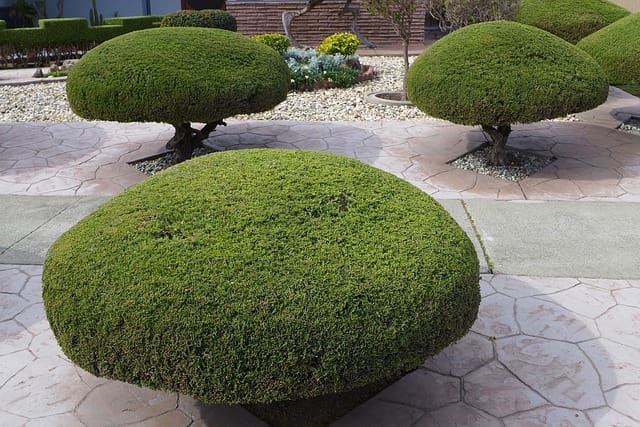

Caterpillars, such as tent caterpillars, can defoliate entire trees if left unchecked. Lastly, borers are beetles or moths whose larvae tunnel into tree trunks, causing structural damage.
Regularly Inspect Trees for Signs of Pest Infestation
In my experience, regularly inspecting trees for signs of pest infestation is crucial to effectively manage tree pests. By conducting routine inspections, you can identify early indications of pest presence and take prompt action to prevent further damage. Look for visual cues such as holes in the bark, chewed leaves, or wilting branches. Additionally, check for the presence of pests themselves, such as eggs, larvae, or adult insects. Pay close attention to the undersides of leaves and crevices in the tree trunk.
Regular inspections enable you to detect and address pest infestations before they become severe, minimizing the potential for long-term damage to your trees.
Now that we understand the importance of regular inspections, let’s move on to the next section and discuss how to implement proper sanitation practices.
Implement Proper Sanitation Practices
How can I effectively implement proper sanitation practices for tree pest management?
Proper sanitation practices are crucial in preventing and controlling tree pests.
Firstly, it’s important to remove and destroy any fallen leaves, fruits, or branches that may harbor pests or diseases. Regularly clean up and dispose of these materials to prevent further infestation.
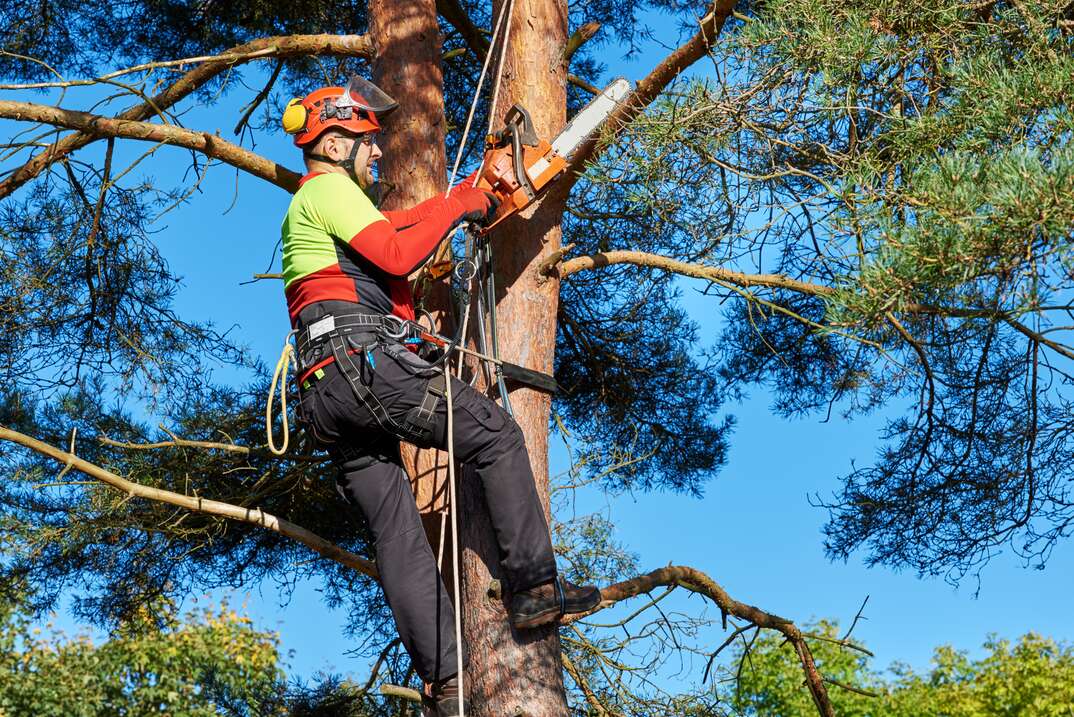

Additionally, pruning infected or infested branches is essential to stop the spread of pests. Properly dispose of the pruned branches to prevent re-infestation.
Furthermore, maintaining a clean and tidy environment around the tree, including removing weeds and debris, can deter pests from taking up residence.
Implementing these sanitation practices will help create a healthy and pest-free environment for your trees, promoting their overall well-being.
Use Organic Pest Control Methods
I prefer using organic pest control methods for effective tree pest management.
Organic pest control methods involve using natural substances and practices to control pests without harming the environment or human health. These methods include the use of biological controls, such as beneficial insects and nematodes, as well as cultural practices like crop rotation and proper pruning.
Organic pest control methods aren’t only effective in managing tree pests but also promote a healthier ecosystem. By avoiding the use of synthetic pesticides, we can protect beneficial insects and other organisms that contribute to the natural balance of our environment.
In the next section, I’ll discuss how encouraging natural predators of tree pests can further enhance our tree pest management strategies.
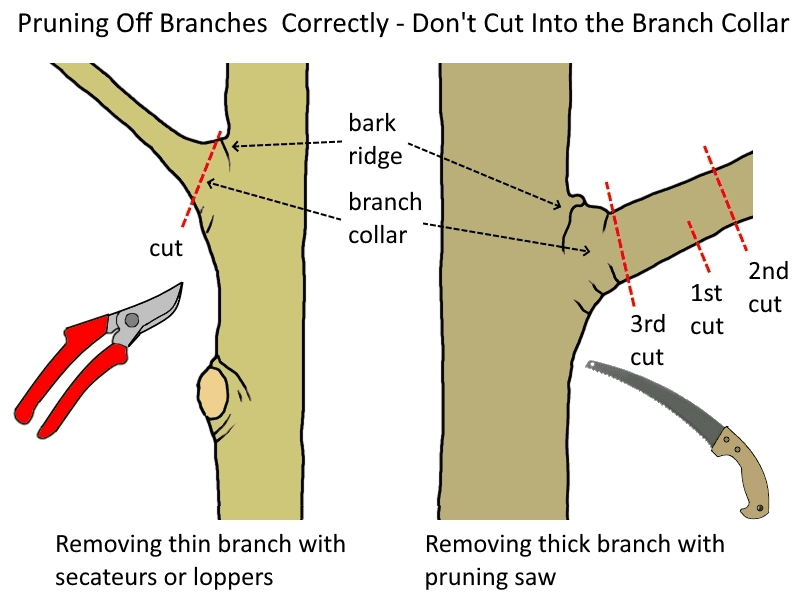

Encourage Natural Predators of Tree Pests
One important tip for effective tree pest management is to actively promote the presence of natural predators. Natural predators, such as birds, ladybugs, and spiders, play a crucial role in controlling tree pests. These predators feed on pests like aphids, caterpillars, and mites, helping to keep their populations in check.
To encourage the presence of natural predators, it’s essential to create a diverse and balanced ecosystem around your trees. Planting native flowers and shrubs can provide habitat and food sources for these beneficial insects and birds.
Additionally, avoiding the use of broad-spectrum pesticides can help preserve the natural predators by not harming them directly. By promoting the presence of natural predators, you can reduce the reliance on chemical pest control methods and create a harmonious environment where trees and their predators can coexist.
Prune Trees to Improve Airflow and Prevent Pest Infestation
To effectively improve airflow and prevent pest infestation in trees, I recommend pruning them regularly. Pruning not only enhances the aesthetic appeal of trees but also plays a vital role in maintaining their overall health. By removing dead or diseased branches, we can significantly reduce the risk of pests infesting the tree. Pruning also helps in improving airflow by allowing sunlight to reach the inner parts of the tree and promoting proper air circulation. This increased airflow helps in drying out the foliage, making it less favorable for pests to thrive. Additionally, pruning allows us to shape the tree, preventing branches from touching nearby structures where pests can easily transfer. By incorporating regular pruning practices into our tree maintenance routine, we can create a healthier and more pest-resistant environment for our trees.
Now, let’s explore another effective strategy to control tree pests – utilizing beneficial nematodes.
Utilize Beneficial Nematodes for Pest Control
By incorporating regular pruning practices into my tree maintenance routine, I can create a healthier and more pest-resistant environment for my trees.
Another effective strategy to control tree pests is to utilize beneficial nematodes. These microscopic roundworms are natural predators of many tree pests and can be a valuable addition to any integrated pest management program.
Here are three reasons why beneficial nematodes are a great pest control option for trees:
- Natural and environmentally friendly: Beneficial nematodes are naturally occurring organisms that don’t pose any harm to humans, pets, or the environment. They target specific pests without causing any collateral damage to beneficial insects or plants.
- Versatile and effective: Beneficial nematodes can be applied to the soil around trees, where they actively seek out and attack pest larvae. They’re effective against a wide range of pests, including grubs, weevils, and borers.
- Long-lasting protection: Once applied, beneficial nematodes establish themselves in the soil and continue to hunt down pests for an extended period. This provides long-lasting protection for trees against future pest infestations.
Incorporating beneficial nematodes into my tree pest management strategy has proven to be an effective and sustainable solution.
Apply Appropriate Insecticides for Targeted Pest Management
After incorporating beneficial nematodes into my tree pest management strategy, the next step is to apply appropriate insecticides for targeted pest management. Insecticides are essential for effectively controlling specific pests that may still pose a threat to the health and vitality of trees.
When selecting insecticides, it’s crucial to consider factors such as the type of pest, the stage of the pest’s life cycle, and the potential impact on beneficial insects. It’s recommended to choose insecticides that are specifically formulated for the target pest, as this maximizes efficacy and minimizes harm to non-target organisms.
Additionally, it’s important to follow label instructions carefully, including application rates and timing, to ensure optimal results. By utilizing appropriate insecticides, we can effectively manage tree pests and protect the overall health of our trees.
Implement Cultural Practices to Promote Tree Health and Resilience
To promote tree health and resilience, it’s essential to implement cultural practices that address soil nutrition and pruning.
Proper soil nutrition ensures that trees have access to essential nutrients, which in turn strengthens their immune systems and enhances their ability to withstand pests.
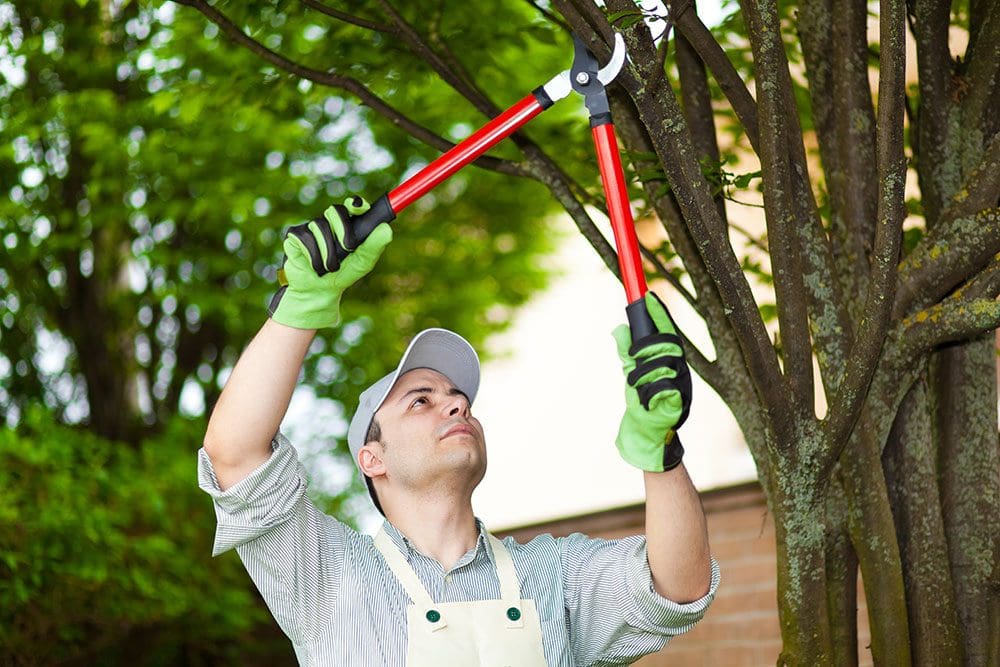

Regular pruning helps maintain tree health by removing dead or diseased branches, improving air circulation, and reducing the risk of pest infestation.
Soil Nutrition for Resilience
Maintaining proper soil nutrition is crucial for promoting tree health and resilience, as it provides the necessary nutrients for optimal growth and defense against pests. To ensure the soil is rich in nutrients, consider implementing the following cultural practices:
- Mulching: Apply a layer of organic mulch around the base of the tree to retain moisture, suppress weeds, and gradually release nutrients.
- Composting: Incorporate compost into the soil to improve its structure, increase nutrient content, and enhance microbial activity.
- Fertilization: Use a balanced fertilizer specifically formulated for trees to provide essential nutrients that may be lacking in the soil.
By implementing these cultural practices, trees can access the nutrients they need to thrive and develop strong defenses against pests.
This sets the stage for the subsequent section on pruning for tree health, which further enhances resilience by removing diseased or damaged branches.
Pruning for Tree Health
To promote tree health and resilience, I implement cultural practices, including pruning, that enhance their overall well-being.
Pruning is a vital aspect of tree care, as it helps maintain the structural integrity and health of the tree. By removing dead or diseased branches, we can prevent the spread of pests and diseases, ensuring the tree’s long-term survival.
Additionally, pruning allows for better air circulation and sunlight penetration, which are crucial for a tree’s growth and development. It also helps shape the tree, improving its aesthetic appeal. However, it’s essential to use proper pruning techniques and tools to avoid causing harm to the tree.
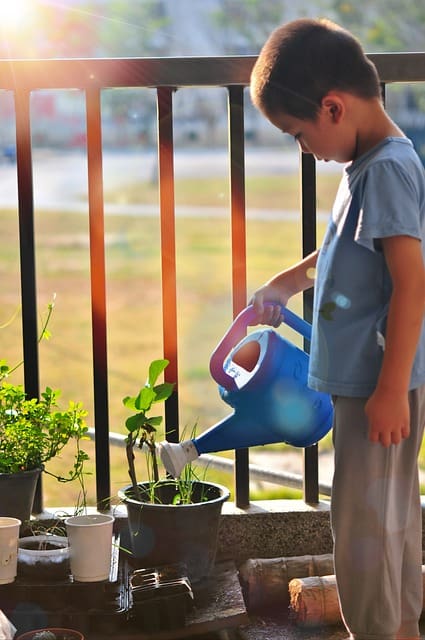

Regular pruning, combined with other cultural practices, can significantly contribute to the health and resilience of trees, creating a vibrant and thriving environment.
Monitor and Manage Tree Stressors to Prevent Pest Outbreaks
One key step in effective tree pest management is actively monitoring and managing tree stressors to prevent pest outbreaks. By identifying and addressing factors that contribute to tree stress, we can create an environment that’s less favorable for pests to thrive.
Here are three important stressors to monitor and manage:
- Soil moisture: Maintaining proper soil moisture levels is crucial for healthy tree growth. Too much or too little water can stress trees and make them more susceptible to pests. Regularly check soil moisture levels and adjust irrigation accordingly.
- Nutrient deficiencies: Trees need a balanced supply of nutrients to stay healthy. Conduct regular soil tests to determine if any essential nutrients are lacking. If deficiencies are detected, apply fertilizer to replenish the nutrients and support tree health.
- Physical damage: Trees can be susceptible to physical damage from construction, storms, or improper pruning. Regularly inspect trees for signs of damage and take prompt action to repair or mitigate any issues.
Practice Proper Tree Watering Techniques
I actively monitor and manage tree stressors, such as soil moisture and nutrient deficiencies, to prevent pest outbreaks. Adequate watering is crucial for maintaining the health and vitality of trees, as it helps to mitigate stress and promote optimal growth.
When watering trees, it’s essential to provide deep, infrequent irrigation, ensuring that the water reaches the root zone. This encourages deep root development and helps trees become more resilient to drought conditions. Watering should be done in the early morning or late afternoon to minimize evaporation.
Additionally, using a soaker hose or drip irrigation system helps deliver water directly to the root zone, reducing water waste and promoting efficient absorption.
Remove and Dispose of Infested Branches or Trees
When it comes to effective tree pest management, it’s crucial to remove and dispose of infested branches or trees. This helps prevent further infestation by eliminating the source of pests and reducing their population. Proper disposal methods should be followed to ensure that the infested material doesn’t spread the pests to other trees or areas.
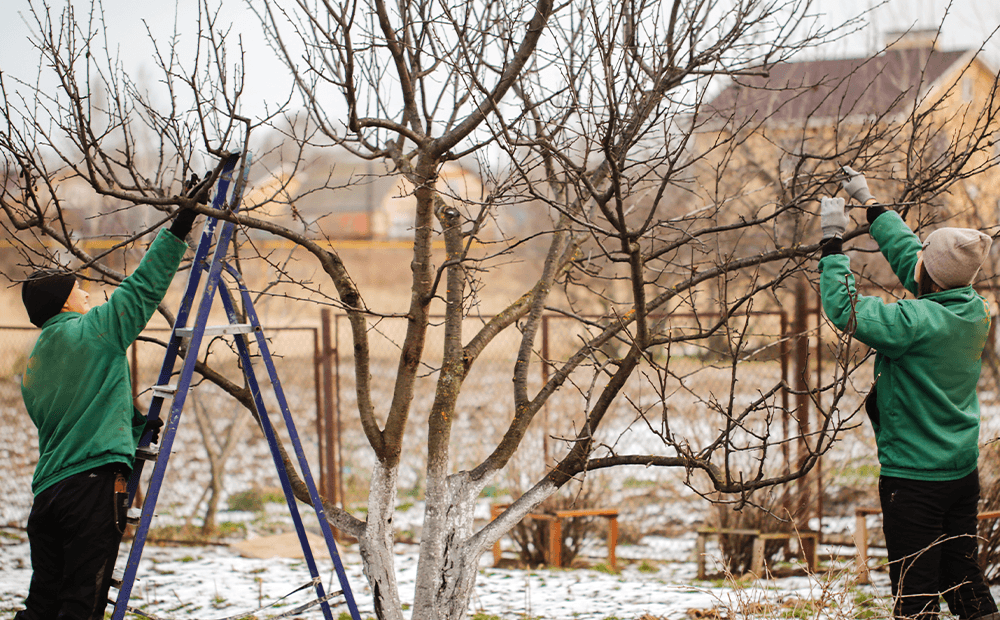

Additionally, removing infested branches or trees can improve tree health by eliminating the stress and damage caused by pests.
Prevent Further Infestation
To effectively prevent further infestation, it’s crucial to promptly remove and dispose of any infested branches or trees. This step is essential in tree pest management as it eliminates the source of infestation and prevents the spread of pests to other healthy trees. Here are three key actions to consider:
- Identify and mark infested branches or trees: Inspect your trees regularly for signs of infestation, such as wilting leaves, holes in the bark, or presence of pests. Mark the infested areas to ensure they’re properly addressed.
- Remove infested branches or trees: Use proper pruning techniques to safely remove the infested branches. If the entire tree is infested, it may be necessary to remove and dispose of the entire tree.
- Dispose of infested materials properly: Burn or chip the infested branches and dispose of the remains in a designated area or facility to prevent the pests from spreading.
Proper Disposal Methods
One effective method for managing tree pests is to properly remove and dispose of infested branches or trees. When faced with a severe infestation, it’s crucial to take swift action to prevent the spread of pests to healthy trees.
To begin the removal process, it’s essential to identify the infested branches or trees accurately. Once identified, the next step is to carefully cut and remove the affected branches or fell the entire infested tree. It’s crucial to follow proper disposal methods, such as burning the infested wood or transporting it to a designated landfill.
By disposing of the infested branches or trees properly, we can significantly reduce the risk of further pest infestations in the surrounding area.
Now, let’s explore the impact of these pests on tree health.
Impact on Tree Health
Properly removing and disposing of infested branches or trees is crucial for maintaining tree health. When dealing with tree pests, it’s important to understand the impact they can have on the overall health of the tree.
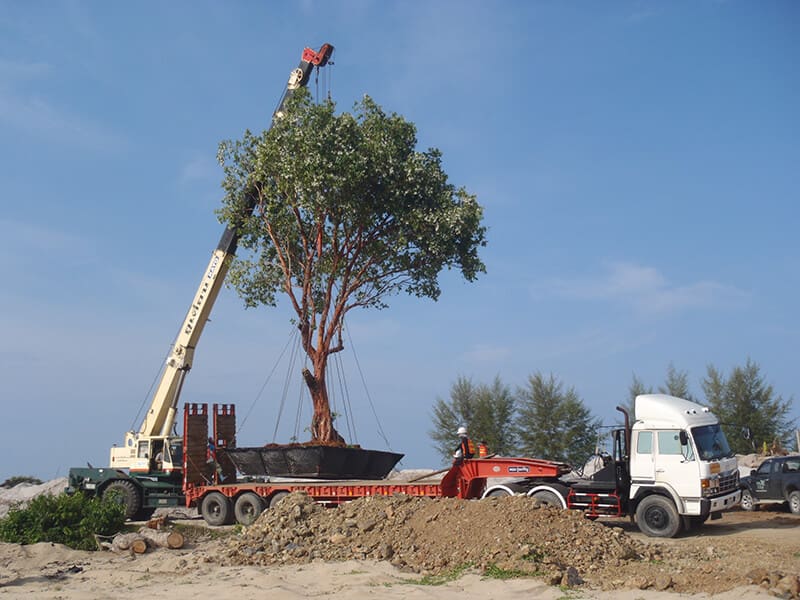

Here are three key reasons why removing and disposing of infested branches or trees is essential:
- Preventing the spread of pests: Infested branches or trees can serve as a breeding ground for pests, allowing them to multiply and spread to other healthy trees nearby. By promptly removing and disposing of infested parts, you can prevent the pests from infesting other trees and causing further damage.
- Mitigating the risk of disease: Infested branches or trees are more susceptible to diseases, as pests weaken their natural defenses. Removing and disposing of infested parts helps reduce the risk of disease transmission and promotes overall tree health.
- Encouraging healthy growth: By removing infested branches or trees, you eliminate potential sources of stress and allow the tree to allocate its resources towards healthy growth. This promotes vigor and enhances the tree’s ability to withstand future pest attacks.
Proper removal and disposal of infested branches or trees are essential steps in effective tree pest management. By following these practices, you can help maintain the health and vitality of your trees.
Seek Professional Help for Severe Pest Infestations
When faced with severe pest infestations, it’s important to seek professional help in effectively managing tree pests.
While some minor pest issues can be addressed with DIY methods, severe infestations require the expertise of trained professionals.
Pest control specialists have the knowledge and experience to accurately identify the type of pests attacking your trees and determine the most appropriate treatment methods. They’re equipped with specialized tools and products that aren’t readily available to the general public.
Additionally, professionals can assess the overall health of your trees and provide recommendations on preventive measures to avoid future infestations.


Hello there! I’m Logan Foster, the green-thumbed social media marketer behind the vibrant world of 1800TreeGuy.com. With roots firmly planted in arboriculture, I’ve branched out to help clients cultivate their dream outdoor spaces, one leafy canopy at a time. My knack for nurturing nature is more than a profession—it’s a way of life.
When I’m not talking trees and teaching the art of arboreal care, you can find me cheering on the Bulldogs—my alma mater’s pride and my forever team. My environmental studies there didn’t just teach me about ecosystems; they instilled a lifelong passion for protecting our planet.
Off the clock, I’m an adventurer at heart. Whether it’s trekking the Appalachian trails, pedaling down a mountain path, or crafting guides to share the wonders of the wild, I’m happiest with soil under my nails and the sun on my face. And let’s not forget Yoda, my pug sidekick. He may not have mastered the art of stillness, but his joyful grins are my daily dose of happiness.
I’m all about making connections—between people and the great outdoors and between my clients and their ideal landscape visions. My approach is personal; every tree has a story, and every garden reflects its caretaker.
If you want to green your scene or share in my outdoor escapades, give me a shout on Instagram or Facebook. Let’s cultivate a conversation and grow a community rooted in a love for the lush life.







